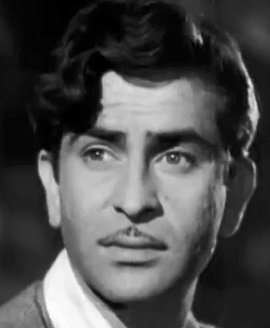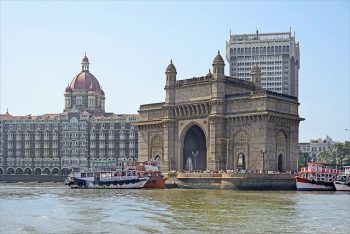The City of Dreams Posted by Rachael on Mar 6, 2017 in Hindi Language, Uncategorized
The city of Bombay (बॉम्बे/Bombay or बंर्बइ/Bambai) officially renamed to “Mumbai” (मुंबई/Mumbai) in 1995, has loomed large in India’s popular imagination since its beginnings (शुरुआत/shuruaat, fem. noun). In the modern age, it is commonly associated with North India’s biggest film (फ़िल्म/film, fem. noun) industry, often known as “Bollywood.” Thus, it is the place where aspiring actors, actresses and other creative people go to pursue their dreams (सपना/sapnaa, masc. noun) in the film industry. Through its depiction in various films from the start of popular Hindi cinema in the early twentieth century, it is clear that it is much more than just a city: it is a character (किरदार/kirdaar, masc. noun) of its own that casts a long shadow across anyone who is inspired by it (प्रेरित करना/prerit karnaa, to inspire someone) and anything to which it is compared (x की तुलना करना/x ki tulnaa karnaa, to compare something/x). Below I’ll talk about a few Hindi films that feature “Bombay (Mumbai)” as the star of their cast.
Shree Char Sau Bis/420 (श्री चार सौ बीस), 1955
I’ve mentioned this film before as one of my favorites (मनपसंद/manpasand, favorite) and a must-see for any cinephile or lover of Hindi films. It stars the legendary actor (अभिनेता/abhinetaa, masc. noun) Raj Kapoor (राज कपूर), who plays the everyman migrant named Raj (predictably enough) from an ambiguous small, North Indian town who travels to the city (शहर/sheher, masc. noun) in search of a better life. This character is closely modeled on Charlie Chaplin’s “Everyman” characters. In this quest, however, the protagonist falls in love with a beautiful schoolteacher named Vidya (or विद्या, a fem. noun that means “knowledge”), played by Nargis (नर्गिस), and confronts some wrenching moral decisions (फ़ैसला/faislaa, masc. noun, decision) as he is lead into a life of crime (अपराध/apraadh, masc. noun or जुर्म/jurm, masc. noun) and deceit (धोका/dhokaa, masc. noun) by one of the city’s richest (अमीर/amir, rich) inhabitants, Seth Sonechand Dharmanand. In fact, the title of the film, “Char Sau Bis,” refers to a section of the Indian Penal Code that punishes the crime of fraud, of which Raj proves guilty later in the story. To call someone a “Char Sau Bis,” therefore, means to label them a cheat.
At the beginning of the film, the city of Bombay is constructed primarily as a bewildering urban (शहरी/sheheri, urban) dystopia as Raj learns from a beggar (भिकारी/bhikaari, beggar) soon after arriving that the city is “heartless”––it is a place where money (पैसा/paisaa, masc. noun) talks above all, where honesty (ईमानदारी/imaandaari, fem. noun) is considered a liability and accomplishments such as Raj’s B.A. degree are worthless. The city can also be seen in stark contrast to the comparatively simple rural (ग्रामीण/graamin, rural) landscape Raj has left behind through the city’s active engagement in a new “transnational world order.” This engagement is established directly from Raj’s arrival in Bombay, when he walks into the city underneath the “auspices” of a “Coca Cola” signboard. Additionally, this sentiment is foreshadowed by Raj’s song “Mera joota hai japani” (मेरा जूता है जपानी), which references material goods made all over the world, yet celebrates a steadfast mental and emotional commitment to somehow remaining “Indian.”
In order to get money to scrape by, Raj pawns his “honesty medal” from school and obtains forty rupees from the transaction which, ironically enough, is stolen from him almost immediately by a thief (चोर/chor, masc. noun). However, it is not long before the homeless pavement dwellers, who resemble in many ways prototypical village people (गाँववाले लोग/gaavvaale log) with their small, tight-knit community fond of traditional music and dance and espousing conventional morality, adopt him as one of their own. Toward the end of the film, the elements of the city that represent dishonesty (बेईमानी/beimaani, fem. noun), corruption (भ्रष्टाचार/bhrashtaachaar, masc. noun) and are usually associated with “Western culture,” represented by the Seth and the wealthy Maya (or माया/fem. noun, which means, tellingly enough, “illusion”) are defeated by the elements of the city that represent traditional goodness: namely Vidya and her father who run a small school for poor children (गरीब बच्चे/gareeb bacche, poor children). Near the resolution of the film, the city’s image is partially rehabilitated by the presence of these good people and the nascent idea of a planned city in which poor residents can find affordable housing.
In the end, Raj must choose between wealth and fame (शोहरत/shohrat, fem. noun) and living a modest life with the woman he loves, surrounded by those from the village who, like him, value the simple goodness (सरल अच्छाई/saral acchaai, fem. noun) in life. The songs (गाना/gaanaa, masc. noun) in this film are truly extraordinary, but below is one of the more iconic. The name of this song, “मेरा जूता है जापानी” (“Meraa jootaa hai jaapaani”) translates to “My shoes are Japanese”; the song celebrates the fact that, despite India’s prolific trade with other countries and strong presence on the global stage, Raj and others like him stay true to his origins. Here is the song and a translation of the chorus:
https://www.youtube.com/watch?v=5wjGc1zGWBc
मेरा जूता है जपानी, ये पतलून इंग्लिस्तानी / Meraa jootaa hai jaapaani, ye patloon inglistaani
सर पे लाल टोपी रूसी, फिर भी दिल है हिंदुस्तानी । / Sar pe laal topi roosi, phir bhi dil hai hindustaani.
My shoes are Japanese, these pants (are) English,
On my head is a Russian hat, but still my heart is Indian.
Rangeela (रंगीला), 1995
This film also features some excellent songs, with music direction by none other than the world-renowned A.R. Rahman (ए॰ आर॰ रहमान). It stars Urmila Matondkar (उर्मिला मातोंडकर) (who plays “Mini”), one of Bollywood’s most accomplished female dancers, who lives in the city of Bombay, waiting to get her big break as an actress (अभिनेत्री/abhinetri, fem. noun). She starts off her career as a back-up dancer and quickly climbs the ladder of success when she is “discovered” by established actor Raj Kamal, played by Jackie Shroff. Although Kamal shows marked interest in her and being in a relationship with him could result in even bigger breaks for Mini in the industry, she must choose in the end between this “hero,” who represents the epitome of Westernized, urbane success (सफ़लता/safaltaa, fem. noun) and a simple man (सीधा साधा आदमी/sidhaa sadha aadmi), Munnu (played by Aamir Khan/आमिर ख़ान), who has none of the trappings of success such as wealth and influence but loves her for who she is really is, rather than the glittering Bollywood star she has become. Ironically enough, Munnu earns a living by scalping tickets to popular Hindi films, such as those in which Raj Kamal stars.
Above all, Rangeela is an homage to the city that is the home of the popular Hindi film industry and the film industry itself, as it is replete with references to both Hindi and Hollywood films and pokes fun at the melodramatic, pampered prima donnas who are some of Bollywood’s actors and actresses. Moreover, the director and cinematographer make a point of showcasing Bombay’s stunning seaside scenery throughout the film. Even the film’s name itself, Rangeela, is supposed to be a film that is being produced within the context of the plot, making for a “film within a film” scenario that leaves the audience constantly questioning what is reality (असलियत/asliyat, fem. noun) (that is, if there is any such thing) and what is taking place within the context of the “filmi.”
Here’s a song from the movie that epitomizes the two lifestyles that Mini is torn between: the glittering, though shallow, success of a film star and the relative freedom and simplicity of a life that is not entirely law-abiding but celebrates the true pleasures of existence:
https://www.youtube.com/watch?v=mXhAPa9W1EE
यारो सुन लो ज़रा, हाँ, अपना यह कहना; / yaaron sun lo zara haan apna ye kehna;
जीना हो, तो अपुन (अपना or sometimes मैं, this is a variation from Bambaiya Hindi, which is mixed with Marathi) के जैसे ही जीना । /jeena ho to appun ke jaise hi jeena.
Just listen friends, yes, (listen) to what I have to say,
If you have to live, live just the way you want.
गाड़ी बँगला नहीं ना, सही ना, सही ।/ gaadi bangla nahin na sahi na sahi.
If you don’t have a car, a bungalow, it’s alright, it’s alright.
बैंक बैलेंस नहीं ना, सही ना, सही । / Bank balance nahin na sahi na sahi.
If you don’t have a bank balance, it’s alright, it’s alright.
टी.वी. वीडियो नहीं ना, सही ना, सही । / TV/Video nahin na sahi na sahi.
If you don’t have a T.V./VCR, it’s alright, it’s alright.
सूटिंग शर्टिंग नहीं ना, सही ना, सही । / Suiting shirting nahin na sahi na sahi.
If you don’t have a suit or dress shirt, it’s alright, it’s alright.
इनकी हुमको क्यों हो फ़िक्र । / Inki humko kyon ho fikar.
Why should we care (worry) about these things?
जी लो जैसे मस्त कलंदर । / Jee lo jaise mast kalandar.*
Live freely, intoxicated by life.*
*Literally, “mast kalandar” (मस्त क़लंदर) refers to an intoxicated (this could refer to a type of intoxicant, such as bhaang/भांग or cannabis often consumed in food or drink but more broadly refers to being “intoxicated” by being in communion with God) Muslim itinerant ascetic or hermit, who has detached himself from the worldly concerns in life to pursue a spiritual path.
Clearly, there are many more films that feature the city of Bombay/Mumbai as a central character. One of my other favorites is Bombay (1995), directed by Mani Ratnam. This was originally a Tamil film later dubbed into Hindi that is about a marriage between a Muslim woman and a Hindu man who run away from their homes in Tamil Nadu to seek a life with greater freedom in Bombay; the film sensitively treats the important events of the early 1990s in India surrounding religious intolerance and the resultant Bombay Riots. Other great films include Talaash (2012) (तलाश, The Search), starring Aamir Khan, which includes scenes of Bombay’s “underworld” and Dhobi Ghat (2011) (धोबी घाट), which follows a young man who works as a washerman (or धोबी/dhobi) in Bombay’s famous “ghaat.”

Build vocabulary, practice pronunciation, and more with Transparent Language Online. Available anytime, anywhere, on any device.





